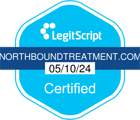Benzodiazepines or what are commonly referred to as “benzos” are sedatives prescribed to treat anxiety or insomnia. Among the familiar names of this type of drug are Valium, Ativan, Klonopin and Xanax. Benzodiazepines treat symptoms such as increased agitation, racing thoughts, muscle spasms, and seizures in connection with anxiety-related conditions, such as bipolar disorder and panic disorders. Due to their high potential for substance abuse and negative long-term effects, benzodiazepine drugs should be limited to short-term prescriptions only.
What are benzos and how do they work? Benzos work by raising the level of GABA or gamma-aminobutyric acid in the brain. GABA is a neurotransmitter that slows down the nervous system and helps ease feelings of anxiousness and manic behavior. Data from the Centers for Disease Control and Prevention shows from 1996 to 2013, the number of adults who filled a prescription for benzodiazepines jumped significantly from approximately 8 million to 13.5 million.
Additionally, in 2015, over 20 percent of opioid overdose fatalities involved benzos. Because they are slowly eliminated from the body, accumulation of the drug is stored within the fatty tissues. Overmedication or drug misuse or abuse involving benzos can build up a tolerance to the medication, requiring more of it to achieve the same effects.
When this happens and drug dependency sets in, it can result in withdrawal effects that make it difficult to stop taking it, even if the prescription has run out. Benzodiazepine dependence also increases the danger of an overdose. This can be fatal if mixed with the use of alcohol or opioids. Benzos may be a top prescribed medication used by millions every day, but it’s important to fully understand the risks involved.
Common Side Effects of Benzos
Although benzos work quickly to generate relief for those who suffer from acute anxiety and other associated disorders, there are serious side effects from taking the medications as well. Benzos affect the central nervous system and when taken too frequently or in large amounts, it can change your physiological makeup to make you feel like you need them to function. Side effects of benzos include:
- Drowsiness
- Amnesia
- Irritability
- Fatigue
- Mood swings
- Attention problems
- Memory impairment
- Nausea
Another adverse effect is slowed motor performance, which may lead to problems operating a motor vehicle or heavy equipment. In some cases, benzo use can also result in aggressive behavior. Since each person metabolizes and responds to drugs differently, there’s no way to predict how someone will handle taking benzodiazepines. This unpredictability makes taking benzos without a prescription particularly dangerous, since there is no one to adjust the medication as needed or prescribe an alternative.
For those who’ve taken Xanax specifically, sleep talking and nightmares have been reported, although the person may have little to zero recollection of the details of it happening. When misused, the concern over side effects and guidelines for how to take it safely aren’t present. This causes a greater chance of drug dependency and subsequent addiction.
Drug Addiction Involving Benzos
If they’re meant to be a prescribed medication, what does the use of benzos mean when it comes to addiction risk? Since they prompt relaxing effects to help with sleep management and stress, it’s not uncommon for people to use them to feel better, prescription or no prescription. An estimated 42 million Americans have used prescription drugs, like benzodiazepines for nonmedical-related use, as reported by the National Institute on Drug Abuse. Furthermore, over 14 percent of Americans between the ages of 21 and 34 have taken benzos without a prescription, according to the Substance Abuse and Mental Health Services Administration.
When people take benzos without the supervision and guidance of a doctor or therapist, developing a dependency on the drug becomes much easier. Rather than follow a recommended dosage to treat specific symptoms, people who abuse benzos often take too much, too often, leading to drug addiction. Once benzodiazepine addiction is part of the equation, it makes it difficult to withdraw from it on your own. What ensues is a cyclical effect of withdrawal and relapse that has dangerous side effects on a person’s physical and mental health and well-being.
How Does Drug Addiction Happen?
Once you develop a drug addiction, it starts to change the physiological makeup of the brain. As more of the drug is absorbed without being eliminated, your tolerance level begins to increase. Rather than sticking with a regular prescribed schedule, you may begin taking it more frequently and at higher dosages to compensate for the changing tolerance levels. For those who don’t have a prescription, the period and dosage of when and how much to take likely starts well outside the regulation.
The risk is higher when someone takes benzos for recreational use rather than a prescribed purpose, but their addictive quality makes them dangerous for both. As the dependency grows, the body eventually becomes addicted and severe withdrawal effects occur as a result of the drug no longer being present. These withdrawal symptoms may include:
- Difficulty concentrating
- Nausea and/or vomiting
- Hand tremors
- Increased anxiety
- Panic attacks
- Heart palpitations
As with the side effects of taking benzos, the effects of withdrawal differ in length and severity for each person. They begin within the first day of discontinuing use, sometimes within a few hours, based on the half-life of the particular drug. The beginning stage is when the withdrawal symptoms are normally the most intense. After a few days, they begin to decrease in frequency and intensity.
However, people who have been battling benzodiazepine addiction or have taken benzos for an extended period of time may have greater difficulty during the process and may feel the withdrawal effects at the same levels through the entirety. The withdrawal phase typically takes at least 7-10 days and can go up to two weeks or longer.
Understanding the Half-Life of Benzos
Benzos is the name of the group of a particular type of drug, but each individual one has its own half-life, which is the time it takes for the drug to be eliminated from the body. What are benzodiazepines half-life differences? Based on timelines, there are three easily identifiable groups:
- Short-acting half-life: Less than 12 hours (ex. triazolam, midazolam)
- Intermediate-acting half-life: Between 12 and 24 hours (ex. lorazepam, alprazolam)
- Long-acting half-life: More than 24 hours (ex. diazepam, clonazepam)
Xanax, for example, is an intermediate-acting benzo. Its generic name is alprazolam. That means it can take a full 24 hours before the drug has been fully eliminated from the body. Per an online guide published by Kaiser Permanente, the effectiveness of benzos, including Xanax, begins to wane after two weeks. Prescribing considerations for benzodiazepines include:
- Using the lowest possible dose for the shortest amount of time
- Not prescribing benzos if the person already takes opioids
- Use over two weeks explicitly not recommended
If taken beyond the initial two weeks, a drug tolerance forms and dependency is likely. This amount of time is quicker for those who use benzos illicitly, since no defined amounts or end dates are planned. Due to the nature of benzos and how they affect the central nervous disorder, addiction can happen quickly.
Seeking Help for Addiction
In many cases, benzo addiction begins by being prescribed the medication to treat anxiety or a related condition. Both people who take them under the supervision of a doctor and those who use them without a prescription are at risk of succumbing to drug addiction. Once addicted, it requires specific care in order to withdraw from this type of drug safely. Withdrawal side effects are painful and uncomfortable, which is why many people who try to quit on their own end up relapsing.
It’s safest to go through withdrawal treatment under the guidance of an addiction treatment center. With medical staff and therapists on hand to monitor any physical reactions and provide support emotional, it increases the chances of completing the detoxification process successfully than when trying to take on the challenge alone. Detox is the first step in a complete program for addiction recovery, followed by residential treatment and/or outpatient care as well.
Each person’s treatment path is different since it’s based on the individual’s history with taking benzos and circumstances that may play a part in healing. Universally, the most important thing is to withdraw from the drug safely and start a plan for recovery with the guidance of others. Additionally, it’s common for people who become addicted to benzos to continue suffering from anxiety or insomnia. Part of a comprehensive program is finding natural remedies to treat these conditions without relying on drugs to feel better.
Seeking support through a rehab center provides a holistic way to treat addiction at its core and customize a treatment plan that aligns with each person’s specific needs and goals. In addition to the phases of detox, residential treatment, and outpatient care, there are specialized programs available through Northbound focused on helping people where they are in their life. Not every addiction case is the same and shouldn’t be guided as such. Personalized treatment is the best way to achieve long-term sobriety and maintain a healthier, happier lifestyle.
Sources:
- National Institute on Drug Abuse. “Benzodiazepines and Opioids.” National Institute on Drug Abuse, 16 Mar. 2018, www.drugabuse.gov/drugs-abuse/opioids/benzodiazepines-opioids.
- Watt, Anthony. “Benzodiazepines: Uses, Side Effects, and Types.” Healthline, Healthline Media, 11 Jan. 2049, www.healthline.com/health/bipolar-disorder/benzodiazepines#1.
- “Alprazolam (Oral Route) Side Effects.” Mayo Clinic, Mayo Foundation for Medical Education and Research, 1 July 2020, www.mayoclinic.org/drugs-supplements/alprazolam-oral-route/side-effects/drg-20061040.https://www.ncbi.nlm.nih.gov/pubmed/7841856;
- “Benzodiazepine and Z-Drug Safety Guideline.” Kaiser Permanente, Jan. 2019. https://wa.kaiserpermanente.org/static/pdf/public/guidelines/benzo-zdrug.pdf
Author
-

President, CEO & Founder at Northbound Treatment Network
Paul Alexander is the CEO, President & Founder of Northbound Treatment Network in Newport Beach, California. He believes wholeheartedly in transformational leadership, organizational health and effective, fully integrated substance use disorder and mental health treatment. With over 27 years of experience in behavioral healthcare, Paul has extensive knowledge of “in vivo” treatment modalities, clinical development, operations, strategy, marketing and financial planning. He has been widely recognized for his development of collegiate-based residential treatment programs for students in recovery and authored a research study at The University of California confirming this modality’s effectiveness.
Paul’s comprehensive professional experience, willingness to innovate, and emphasis on organizational health are vital factors in Northbound’s continued success. Paul received his Certified Addiction Treatment Specialist training at Saddleback College in Mission Viejo, CA, and was awarded Outstanding Alumni Service Award in 2002. Paul holds a Bachelor of Arts degree in Criminology, Law and Society, Summa Cum Laude, from University of California, Irvine, and a Juris Doctorate degree from Loyola Law School of Los Angeles. Paul currently serves on The National Association of Addiction Treatment Providers (NAATP) board. In addition, he serves on The Family Recovery Foundation board and The CarePossible board in Orange County; both organizations are committed to raising funds for family recovery and treatment for former military personnel. Paul is in recovery himself and lives in Orange County with his wife Silvana and his two young sons, Noah and Dean.










